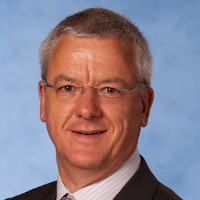Q: What is United’s view on Africa and where does it fit into the airline’s strategy?
A: United would always like to consider itself as opportunistic – and ‘connecting people and uniting the world’ is at the core of what we do. United is delighted to be returning to Africa and we will look to introduce services to where our customers want to fly.
Q: What was the business case behind the launch of the Cape Town route?
A: We know from our customers that Cape Town and the Western Cape is on many people’s bucket list, and anyone who has been there knows why! In the opposite direction, the US has so much to offer the tourist that it is no surprise that it constantly rates as one of the top countries in the world to visit. But beyond the leisure market, the burgeoning business community of Cape Town and the Western Cape is also looking for direct links to the US, and the financial capital of North America, New York City. Beyond New York/Newark, United offers over 80 non-stop onward destinations across North America, Canada and the Caribbean.
Q: Which aircraft will United use on the route and why?
A: United’s new Cape Town to New York/Newark route will be operated with one of the most advanced passenger aircraft, the Boeing 787-9.
Q: How many business class seats does it have and what are some of the standout features of this cabin?
A: The service will be operated with a Boeing 787-9 Dreamliner featuring 48 seats in United Polaris business class, 88 seats in economy plus and 116 seats in economy. The Dreamliner offers customers many features for increased comfort such as large windows, spacious overhead storage and modern LED lighting to simulate a full day, helping passengers to adjust their internal clock on the trans-Atlantic flight. In addition, a lower cabin altitude, cleaner air and smoother ride help customers feel rested on arrival.
Q: How is United using technology to enhance the passenger experience?
A: We are introducing new technologies as well as new products and services, which are improving the travel experience for all of our customers throughout their journey. This is what we call the Customer 360 mindset. We continue to invest in technology that puts flight information and transactions at customers’ fingertips with an app that enables mobile bookings, status updates, check-in, boarding passes and more. We identified boarding as an opportunity to improve the airport experience and recently introduced our ‘Better Boarding’ process – giving customers more space at the gate, less time waiting in line, and improved boarding information to create a less stressful environment.
ConnectionSaver automatically identifies departing flights that can be held for connecting United customers, while ensuring those who have already boarded the aircraft arrive at their destination on time. It sends text messages with directions to the gate for their connecting flight and information about how long the walk will take. United’s ConnectionSaver technology automatically scans flights for customers who are making tight connections to determine if the connecting flight can be held without inconveniencing other customers. The ConnectionSaver tool takes into account factors such as the time it will take for late connecting customers to travel gate-to-gate as well as the impact the hold may have on other flights and customers. Our onboard entertainment system offers the world’s most extensive suite of accessibility features on seatback entertainment, which accommodates any level of vision, as well as provides support for customers with hearing and mobility issues.
Q: Do you have a view on Africa moving to a more ‘open skies’ approach than it currently enjoys?
A: These decisions are of course political and in all markets that United flies we need all relevant permissions before commencing service. The more open the markets, the easier it is for air carriers to facilitate new connections – for both business and leisure purposes.
Q: Are there any plans to add other African cities to United’s route map?
A: Our focus right now is to deliver this new service for South Africa.
Q: Have you picked up on any global airline trends that you feel are worth noting?
A: The global travel market continues to grow and new flying is testament to this. Somewhere on the globe there will always be localised pockets of weakness caused by a variety of micro or macroeconomic factors. However, the US market remains very solid (as recently reported in our Q3 earnings) and we at United are very confident in our future.
Q: Where would you like to see United’s African presence in 10 years’ time?
A: Our focus at this time is on introducing this new route and working with our partners across South Africa to make it a success.

